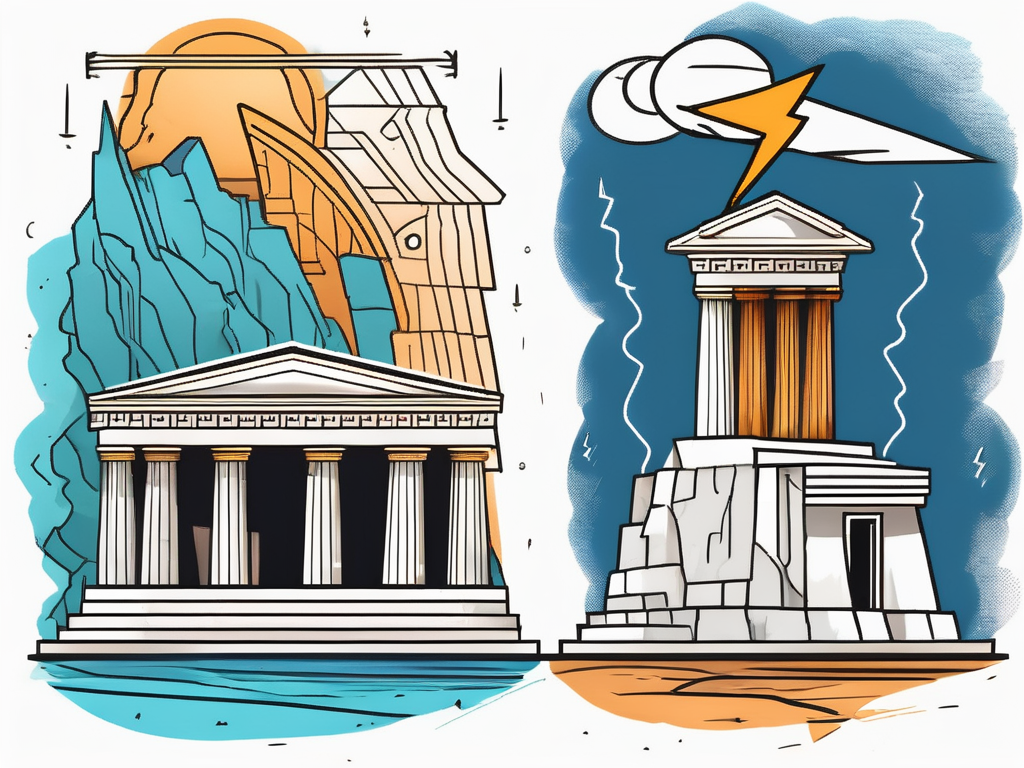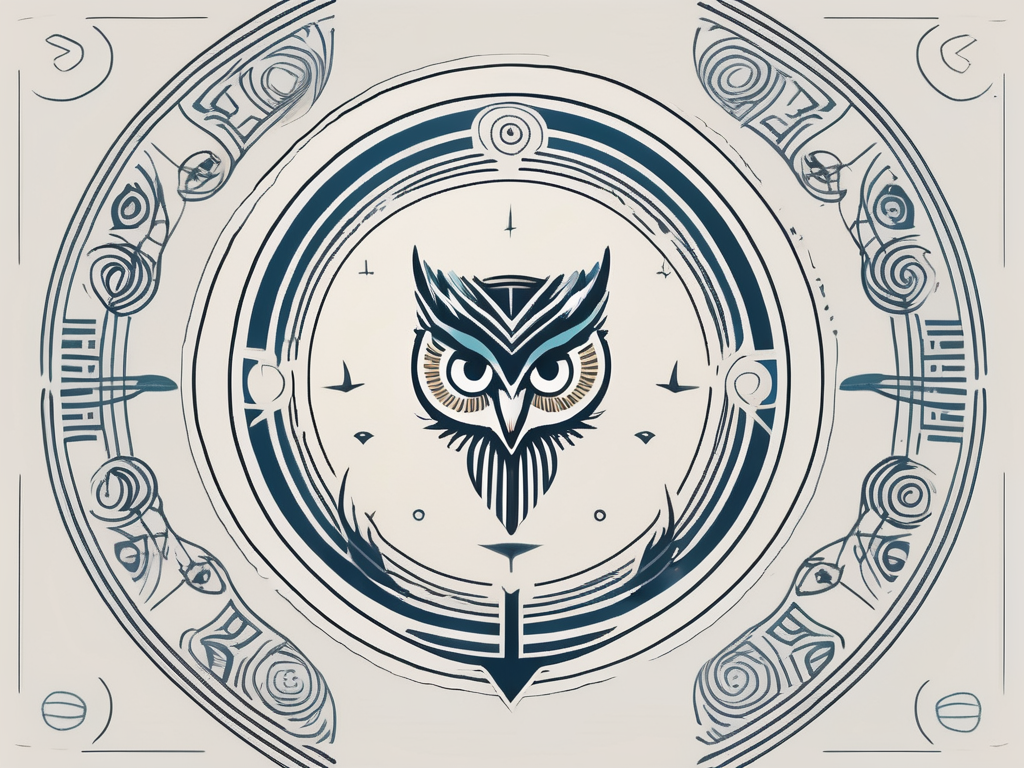Egyptian mythology is a treasure trove of ancient storytelling, filled with intriguing characters and mythical creatures. These creatures played a crucial role in the beliefs and culture of ancient Egypt, and their symbolism still captivates us today. In this article, we will delve into the captivating world of Egyptian mythical creatures, exploring their significance, their influence on art and literature, and their modern interpretation in popular culture.
Understanding the Role of Mythical Creatures in Ancient Egypt
Ancient Egypt, a civilization deeply rooted in religion and mythology, captivates us with its rich tapestry of gods, goddesses, and mythical creatures. These fantastical beings, far from being mere figments of imagination, held profound significance in Egyptian culture. They were not only revered as divine entities but also served as powerful symbols that reflected the Egyptians’ beliefs, values, and understanding of the world.
The Significance of Mythology in Egyptian Culture
Mythology was not just a collection of stories for the ancient Egyptians; it was an integral part of their daily lives and rituals. The tales of mythical creatures and gods were not only sources of entertainment but also served as allegories, teaching moral lessons and conveying societal norms. These stories were passed down from generation to generation, ensuring the preservation of their culture, tradition, and spiritual beliefs.
Imagine yourself in the bustling streets of ancient Egypt, where the air is filled with the scent of incense and the sound of prayers. The people, deeply immersed in their faith, found solace and guidance in the stories of mythical creatures. These tales provided them with a deeper understanding of the world around them and their place within it.
The Symbolism Behind Mythical Creatures
Each mythical creature in the Egyptian pantheon had its own unique symbolism, representing various aspects of the human experience. Let us delve into the symbolism of some of these captivating beings.
The sphinx, with its majestic lion body and human head, symbolized protection and wisdom. It stood as a guardian, both physical and spiritual, watching over the pharaohs and their kingdom. The sphinx’s powerful presence embodied the strength and intellect necessary for a wise ruler.
Now, let us turn our attention to Ammut, a fearsome creature with the head of a crocodile, the body of a lion, and the hindquarters of a hippopotamus. Ammut played a crucial role in the afterlife, as she stood ready to devour the hearts of those deemed unworthy. Her presence served as a constant reminder to the Egyptians of the importance of leading a righteous life. To them, Ammut represented the consequences of a life lived without virtue.
As we explore further, we encounter the serpopard, a mythical hybrid of a serpent and a leopard. This enigmatic creature, often depicted in Egyptian art, symbolized the mastery of the desert. It combined the agility and stealth of a leopard with the power and cunning of a serpent. The serpopard embodied the ability to navigate the harsh and unforgiving terrain, reminding the Egyptians of their resilience and adaptability.
These mythical creatures, with their intricate symbolism, were not only revered but also celebrated through various forms of art and architecture. They adorned the walls of temples, tombs, and palaces, immortalizing their significance in Egyptian culture.
As we reflect upon the role of mythical creatures in ancient Egypt, we gain a deeper appreciation for the profound connection between mythology, spirituality, and the human experience. These captivating beings continue to fascinate us, offering a glimpse into the ancient Egyptian worldview and the enduring power of myth.
The Pantheon of Egyptian Mythical Creatures
Within Egyptian mythology, a multitude of mythical creatures exists, each with its own fascinating backstory. Let’s explore some of the most iconic creatures from this pantheon.
The Sphinx: Guardian of the Pharaohs
The sphinx, with its enigmatic smile and massive stone body, stands as a testament to ancient Egypt’s architectural and artistic prowess. Often flanking the entrances of temples and tombs, the sphinx was believed to protect the sacred spaces from evil spirits and intruders.
Legend has it that the Sphinx would present riddles to those seeking entrance, denying access to those who failed to solve them. This added an element of mystery and intrigue to the sphinx, giving it an otherworldly aura that still captivates our imagination today.
Imagine standing before the imposing figure of the sphinx, feeling the weight of its gaze upon you. The intricate carvings on its body tell tales of ancient battles and divine encounters. As you approach, you can’t help but be in awe of the craftsmanship and the stories it holds.
It is said that the sphinx’s stone body holds secrets yet to be discovered. Scholars and archaeologists have dedicated their lives to unraveling the mysteries hidden within its stony embrace. What ancient knowledge might be waiting to be unveiled?
Ammut: The Devourer of the Dead
Ammut, often referred to as the “Eater of Hearts,” played a significant role in the Egyptian belief system concerning the afterlife. She stood by the scales of Ma’at, the goddess of justice, and devoured the hearts of the deceased who failed to live a virtuous life.
This concept of judgment in the afterlife reinforced the importance of leading a morally upright life and contributed to the Egyptians’ focus on maintaining balance and harmony during their time on Earth.
Imagine the scene in the Hall of Judgment, where the souls of the departed stand before Ammut, trembling with anticipation. The weight of their hearts, the sum of their deeds, is carefully measured against the feather of Ma’at. The outcome of this judgment determines their fate in the afterlife.
Ammut’s presence serves as a reminder of the consequences of one’s actions. It instills a sense of accountability and encourages individuals to strive for righteousness in their daily lives. The fear of being devoured by Ammut’s insatiable hunger serves as a powerful motivator to lead a virtuous existence.
Serpopards: The Serpent-Leopards of the Desert
One mythical creature that exemplifies the Egyptians’ fascination with the desert is the serpopard. These fantastical beings were portrayed as creatures with the long, sinuous body of a serpent and the graceful head of a leopard.
In Egyptian art, serpopards were often depicted alongside pharaohs, symbolizing their dominion over the arid lands. They were creatures of duality, representing both the dangerous and unpredictable nature of the desert, as well as the pharaohs’ mastery over it.
Picture the vast expanse of the desert, stretching out before you with its shifting sands and scorching sun. In the distance, a serpopard slithers through the dunes, its leopard head held high, surveying its domain. It moves with a grace that belies its power, a reminder of the delicate balance between order and chaos.
The serpopard’s presence in Egyptian art and mythology speaks to the Egyptians’ deep connection with their environment. They recognized the harshness of the desert, but also its potential for sustenance and prosperity. The serpopard embodies this duality, reminding us of the delicate equilibrium that exists in nature.
As you delve deeper into the world of Egyptian mythology, you realize that these mythical creatures are more than just stories. They are reflections of the ancient Egyptians’ beliefs, values, and their profound connection with the world around them. Each creature holds a piece of their history, waiting to be discovered and understood.
The Influence of Egyptian Mythical Creatures on Art and Literature
Art and literature played a crucial role in spreading the stories and imagery of Egyptian mythical creatures to future generations. Hieroglyphics, consisting of symbolic pictograms, often featured these creatures prominently.
Depictions of Mythical Creatures in Hieroglyphics
From the imposing figure of the sphinx to the mysterious serpopards, hieroglyphics offered a visual representation of these mythical beings. The detailed illustrations conveyed their significance, perpetuating their symbolic power throughout the ages.
These depictions were not limited to religious or ceremonial purposes. They also found their way into everyday objects, such as amulets, jewelry, and household items, making the ties between the mythical creatures and the Egyptian people even stronger.
Mythical Creatures in Egyptian Literature
Egyptian literature also played a vital role in showcasing the mythical creatures’ influence. The stories of gods and monsters were recorded in texts such as “The Book of the Dead” and “The Tale of Two Brothers,” ensuring their preservation for future generations.
These texts brought the mythical creatures to life, providing vivid descriptions and narratives that captivated readers. They showcased the Egyptians’ rich storytelling tradition and their profound reverence for these creatures.
The Modern Interpretation of Egyptian Mythical Creatures
Even in modern times, the allure of Egyptian mythical creatures persists, and they continue to captivate our collective imagination. Through various mediums, such as film, literature, and games, these creatures have found a new lease on life.
The Role of Mythical Creatures in Modern Egyptian Culture
Modern Egypt still holds a deep connection to its mythical past. Folklore and legends involving these creatures are passed down through generations, ensuring their continued relevance in the cultural tapestry of the nation.
Many festivals and celebrations incorporate mythical creatures, bringing them to life through performances, costumes, and traditional dances. This serves as a reminder of the rich heritage that the Egyptians have inherited, keeping their mythical creatures alive in the hearts and minds of the people.
Egyptian Mythical Creatures in Popular Culture
The influence of Egyptian mythical creatures extends far beyond Egypt’s borders, permeating popular culture around the world. From films like “The Mummy” to video games like “Assassin’s Creed Origins,” these creatures have become iconic symbols of ancient Egypt.
Their appearances in various forms of media have sparked interest and curiosity, further fueling the fascination with Egyptian mythology. The enduring popularity of these creatures serves as a testament to their everlasting appeal and their ability to transcend time and geographical boundaries.
In Conclusion
The world of Egyptian mythology is a captivating realm filled with a rich cast of mythical creatures. From the guardianship of the sphinx to the devouring presence of Ammut, these creatures served as both symbolic representations and conduits of ancient Egyptian beliefs and culture.
Their enduring legacy can still be felt today, resonating through the artistic and literary expressions of modern society. The fascination with these creatures shows no signs of waning, as they continue to captivate and inspire new generations, keeping the wonders of Egyptian mythology alive for all to explore and admire.












